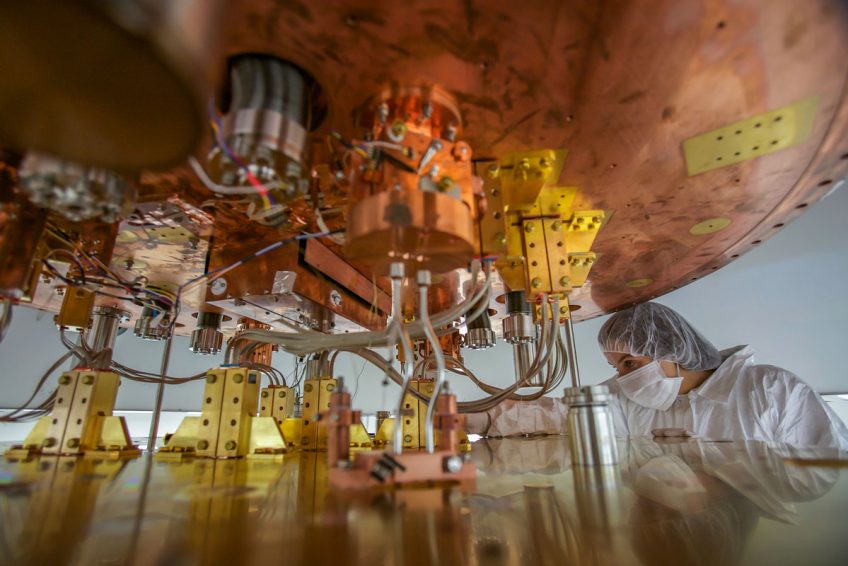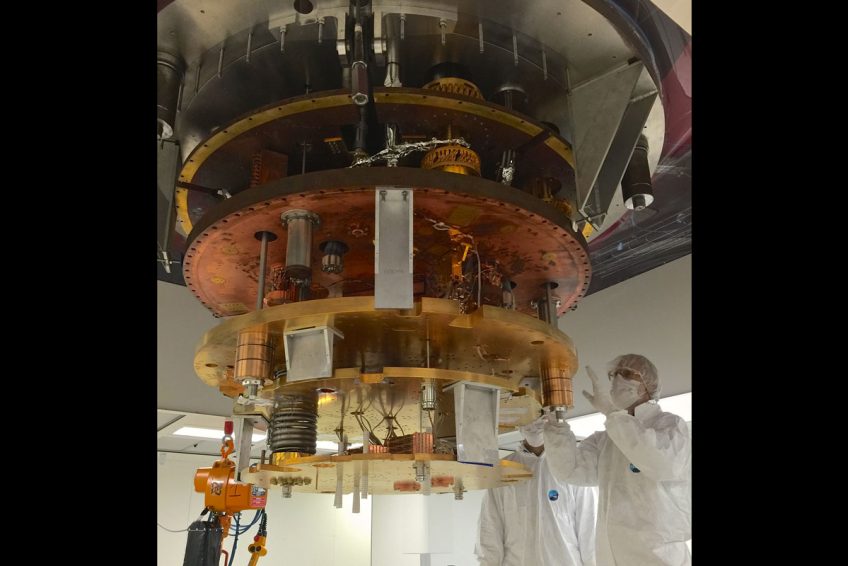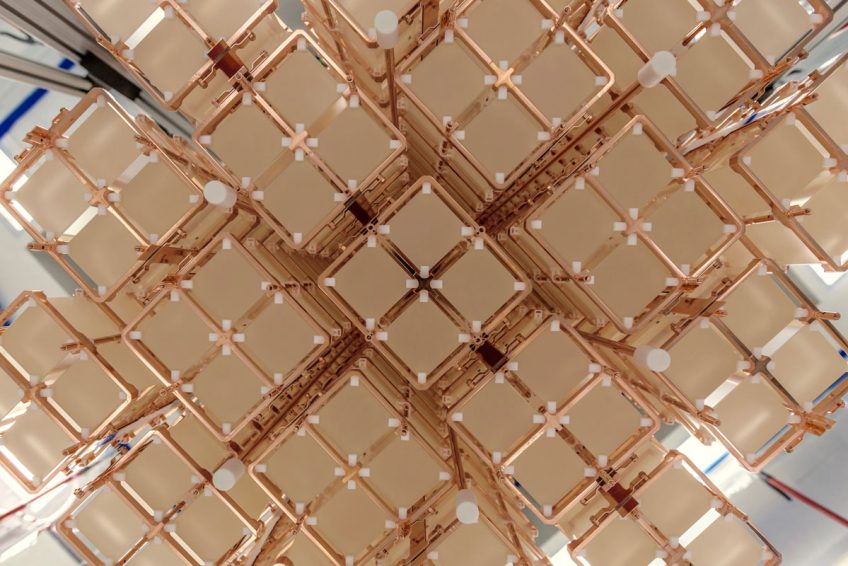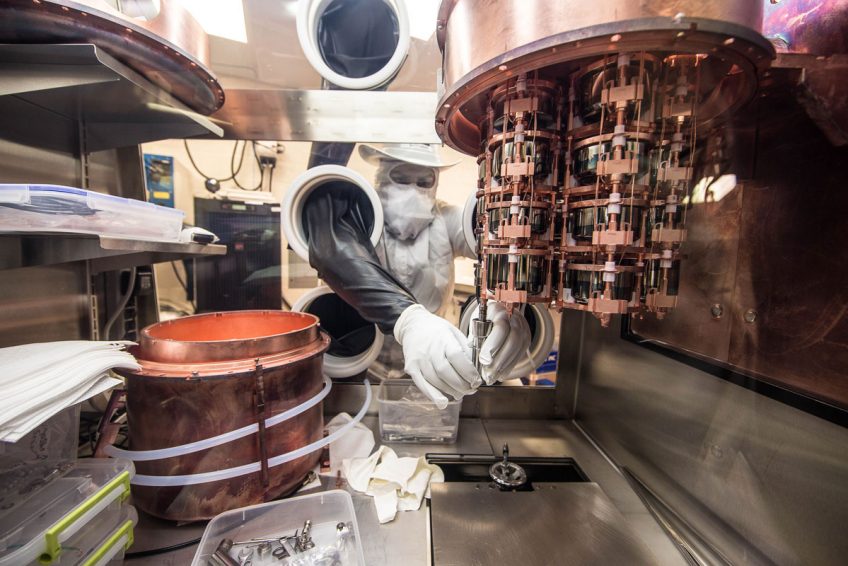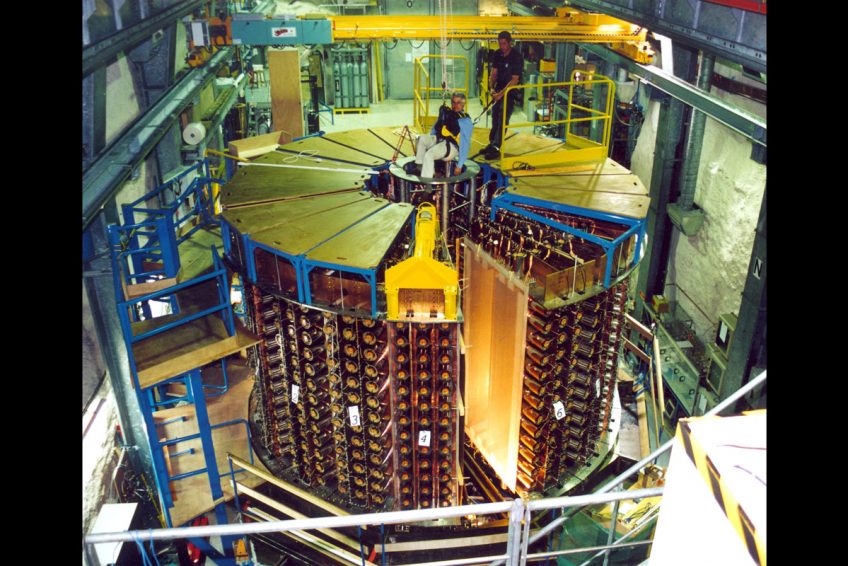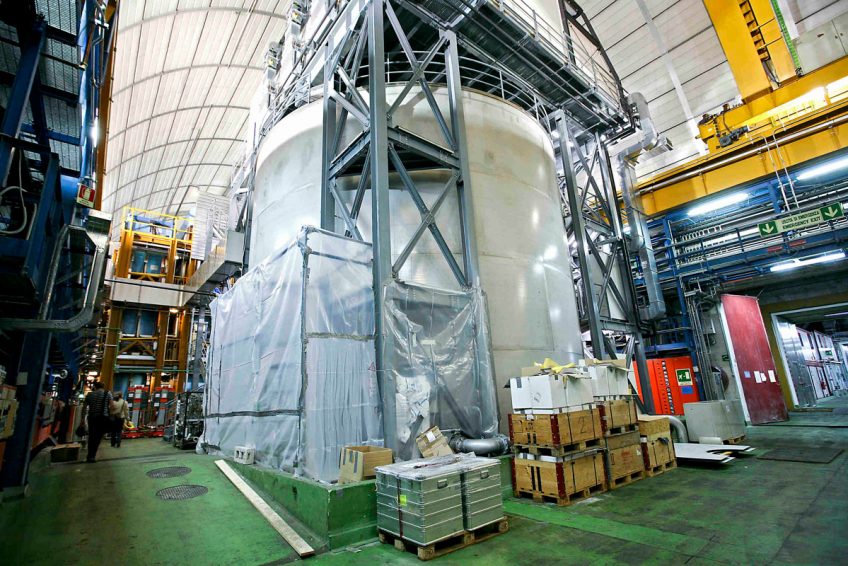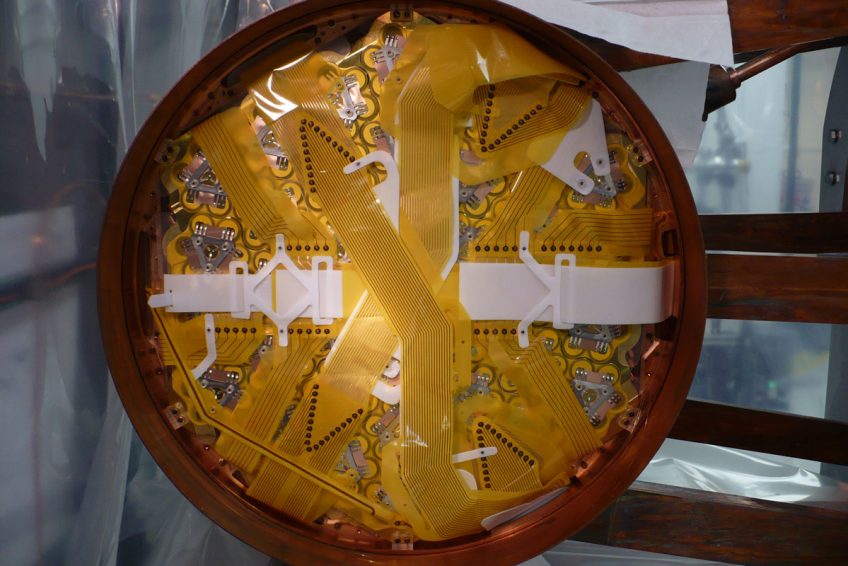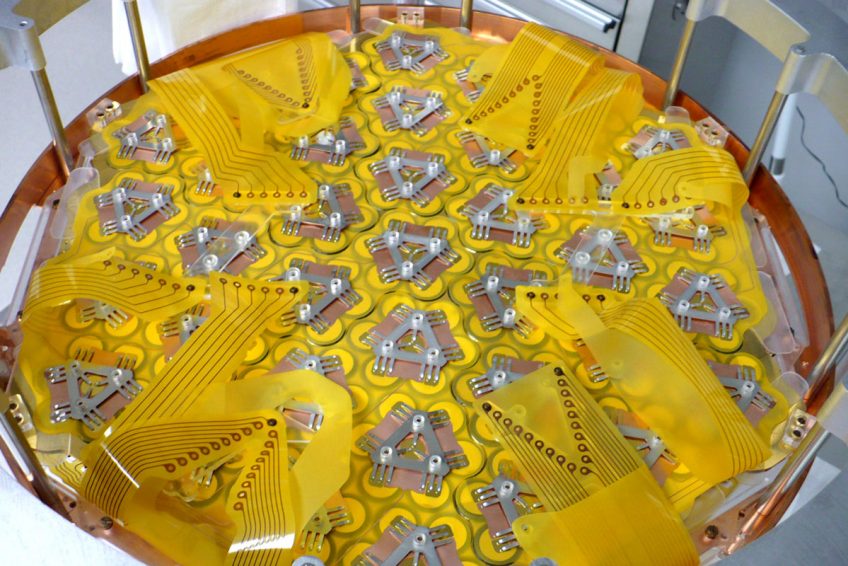Neutrinos are born in various decays, which is when a particle changes from one type into another. There are a couple of ways this can happen.
Sometimes, elementary particles (which are the ones that can’t be broken down any further) transform into different, lighter particles, often creating neutrinos in the process. This is particle decay. A common example is when the muon decays into an electron, an electron antineutrino, and a muon neutrino (μ → e + ¯νe + νμ). Muons are unstable and decay into their lighter counterparts, electrons, in about 2.2 microseconds.
Nonelementary, or composite, particles can also change and emit neutrinos. This is especially important in the protons and neutrons that make up atoms.

In a beta decay, a neutron (made of one up quark and two down quarks) can transform into a proton (made of two up quarks and one down quark), an electron, and an electron antineutrino. This reaction can happen in a neutron within an atom or a free-floating neutron.
Let’s look at a process called beta decay. One type (the kind that happens in nuclear reactors) is when a neutron turns into a proton. Protons and neutrons consist of fundamental particles called quarks. A down quark within the neutron transforms into an up quark, changing the neutron into a proton (and changing the atomic element as a result). The laws of physics require that a few different properties be conserved, so the process also releases an electron and an electron antineutrino.
On occasion, two beta decays happen almost simultaneously, releasing two electrons and two electron antineutrinos. This is the aptly named double beta decay.
An even rarer process, if it exists, would be neutrinoless double beta decay. In this reaction, two neutrons would become two protons, a virtual neutrino exchange would cause the antineutrino emitted by one beta decay to be reabsorbed in the second decay, and electrons would carry away all the energy—but this requires neutrinos to have a special property. It’s only possible if the antineutrino and neutrino are actually the same, a property that would make them so-called “Majorana particles.” Many scientists believe that neutrinos are indeed Majorana particles, and a number of incredibly precise experiments are looking for this neutrinoless double beta decay.
Most experiments to study neutrinoless double beta decay use a large amount of very pure material and look for electrons carrying away a signature amount of energy. This method is difficult because any amount of background radiation coming from the equipment, atmosphere, or nearby surroundings can create so much noise and confusion that the decay might go unnoticed. Even the normal activity of atoms bouncing around can cause problems, so experiments often operate at temperatures colder than outer space. Some of the more common elements used for these experiments include germanium, cadmium, and xenon. Examples of a few of the projects focused on this phenomenon are the Majorana Demonstrator and EXO in the United States and CUORE and GERDA in Italy.










